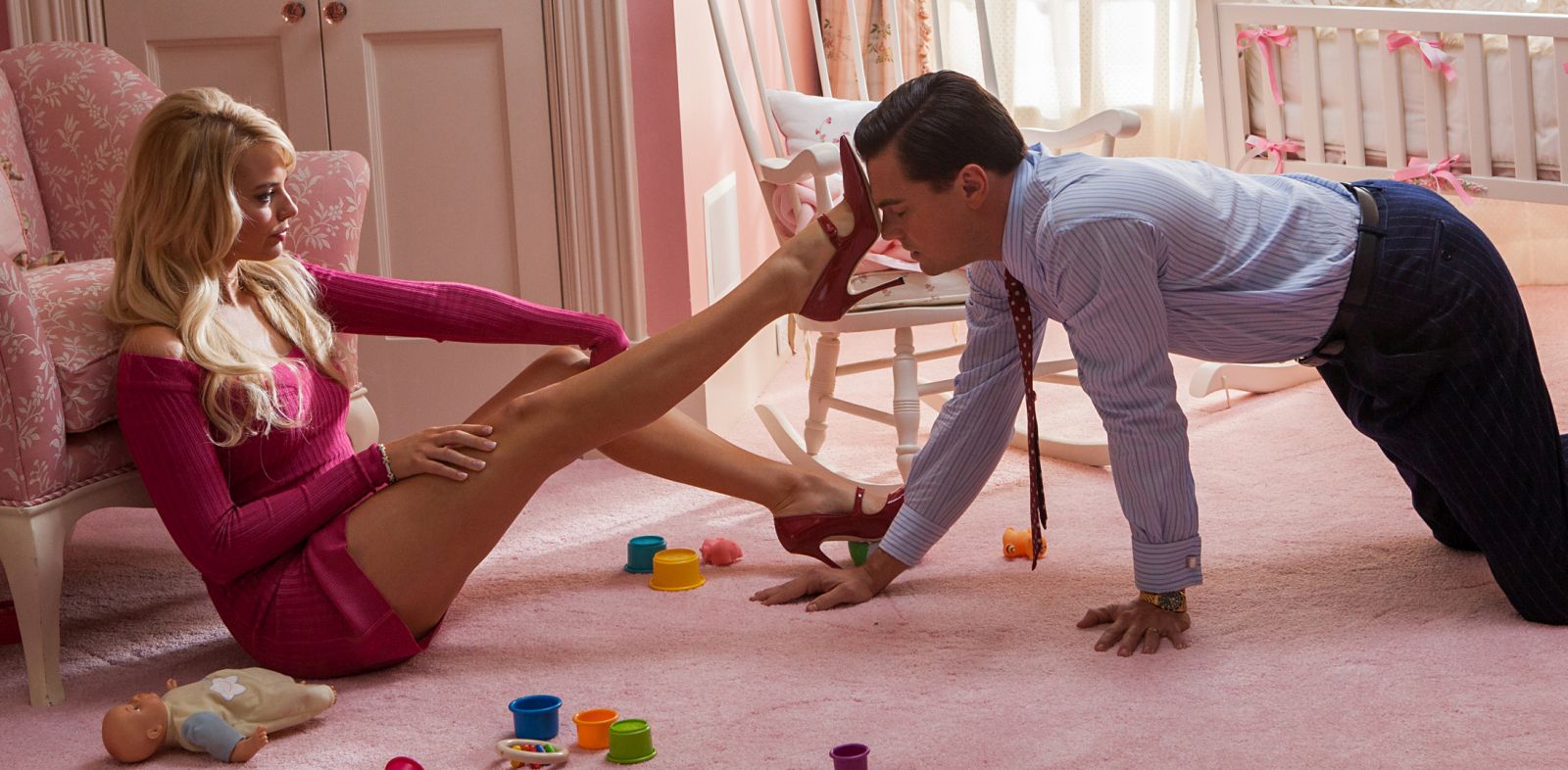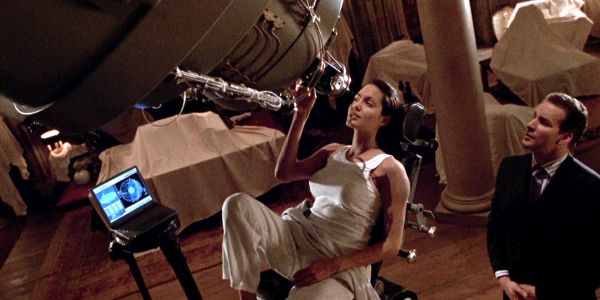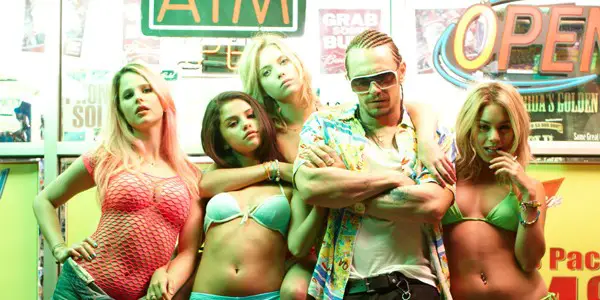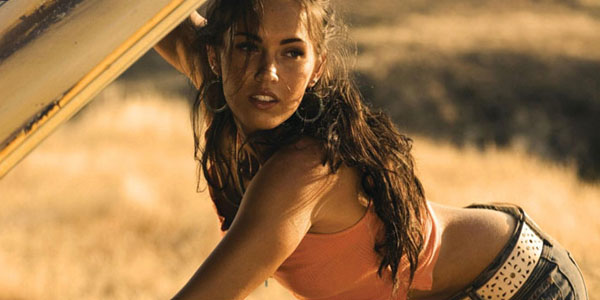Film Theory 101 – Laura Mulvey: The Male Gaze Theory

Rachael Sampson is a Northern screenwriter and critic based in…
Laura Mulvey is a feminist film theorist from Britain, best known for her essay on Visual Pleasure and Narrative Cinema. Her theories are influenced by the likes of Sigmund Freud and Jacques Lacan (by using their ideologies as “political weapons”) whilst also including psychoanalysis and feminism in her works. Mulvey is predominantly known for her theory regarding sexual objectification on women in the media, more commonly known as The Male Gaze” theory.
Being one of the most notable film theorists in the world, her ideas and clear proof of misogyny in film opened up the eyes of many, and in 1975, something that people simply accepted was finally questioned. Although Mulvey‘s theory has helped identify issues with gender in film, why do we still have the same issues decades later? Why do we still see the same roles for women in film and television regurgitated over and over again?
This article is available as an Audio Article to our patrons!
 Don’t feel like reading and would prefer to listen, instead? Sign in or become a patron today!
Don’t feel like reading and would prefer to listen, instead? Sign in or become a patron today!
Mulvey states that “the gender power asymmetry is a controlling force in cinema and constructed for the pleasure of the male viewer, which is deeply rooted in patriarchal ideologies and discourses.” This means that the male viewer is the target audience, therefore their needs are met first and that this problem stems from an old fashioned, male-driven society. Her theory on how women are portrayed in film and the media is just as prevalent today as it was in 1975 when her text was first published.
Mulvey believes that women are in fact “the bearer of meaning and not the maker of meaning,” which suggests that women are not placed in a role where they can take control of a scene, instead they are simply put there to be observed from an objectified point of view. In addition, she believes that this way of watching film is never alternated so that the men are in fact the ones who are being viewed in this manner. This inequality enforces the ancient and outdated idea of “men do the looking, and women are to be looked at.”
The Male Gaze Theory
The Male Gaze theory, in a nutshell, is where women in the media are viewed from the eyes of a heterosexual man, and that these women are represented as passive objects of male desire. Audiences are forced to view women from the point of view of a heterosexual male, even if they are heterosexual women or homosexual men.

From the feminist perspective, this theory can be viewed in three ways: How men look at women, how women look at themselves and finally, how women look at other women. Typical examples of the male gaze include medium close-up shots of women from over a man’s shoulder, shots that pan and fixate on a woman’s body, and scenes that frequently occur which show a man actively observing a passive woman.
The Male Gaze suggests that the female viewer must experience the narrative secondarily, by identification with the male. In 1929 Salvador Dali released a film called Un Chein Andalou, which is an abstract short film that portrays a perfect example of this. One scene in the film, a man is found dissecting the iris of a young woman’s eye, which infers this idea of female sight not being central, and that men are not only the audience, but also in control of the action, the camera, the direction, the writing, et cetera, therefore completely running the show, dominating the entirety of the narrative and how it is depicted.
Not only is the Male Gaze theory relevant to cinema, but it also correlates with every-day life. Some theorists have noted that in advertising, objectification and sexualised portrayals of the female body can be found even in situations where sex or representations of sex have nothing to do with the product being advertised.

Although as of recently, movies like Frozen (2013) and Suffragette (2015) do Mulvey justice in highlighting women’s independence and empowerment, breaking away from the Male Gaze, decades later we still see the same broken record playing, with films like The Wolf of Wall Street (2013) and Star Trek Into Darkness (2013) revealing women in extremely sexual and somewhat unnecessary manners.
One reason for this is simply that the movie companies producing these films are male-dominated, as cinema is predominantly a male-run industry, and just like when Mulvey originally wrote this critical analysis of film, producers are still churning out the same work that has proved to be successful in the past with audiences as they invest to make profit. They believe that they are giving the public what they want, when that isn’t necessarily true. They are giving audiences what a proportion of males want, and what the rest of society has been brainwashed to accept.
Examples of The Male Gaze in Film: Transformers
One film which stands out when considering this theory is Michael Bay‘s Transformers franchise. Firstly, these movies have a huge difference in the male/female character ratio, instantly making it an unrepresentative movie as it doesn’t depict 50% of its audience. All the women Bay casts in this franchise are sexualised in some way, and it has no relevance to the story line, or as Mulvey would put it: it is just to please the heterosexual male, rendering it a movie with touches of irrelevant objectification and misogyny.

Bay clearly went into this franchise with sexual objectification in mind as he cast some of the most sexually objectified women in Hollywood. For example, in the first movie, Megan Fox plays Sam Witwicky’s (Shia LaBeouf) love interest, and who can forget that memorable scene where Fox is in a tight, low-cut top bent over a car engine? This degrading scene is also followed with a variety of other camera angles and shots which are clearly only included in the movie for sexual gratification targeted towards the heterosexual male.
This unoriginal and predictable character archetype did not stop at the first few films either, as Bay continued to cast limited women in his films, and all the women included in the franchise are deemed stereotypically attractive, as their careers in acting are secondary to their modelling careers.
For example, model Rosie Huntington-Whiteley plays the role of Sam’s girlfriend in Transformers: Dark of the Moon (2011) and she has a variety of scenes where she walks around with minimal clothing on. Or what about Nicola Peltz in Transformers: Age of Extinction (2014), who is also objectified with minimal clothing and worms-eye camera angles, letting audiences see a lot of skin, indefinitely more than a male actor would reveal in this franchise.
Disney Princesses
Whilst the Male Gaze can be applied to many obvious films such as Transformers, there are some films that people might not even consider as sexist and misogynistic, such as the movies that feature everyone’s beloved Disney princesses: Beauty and the Beast, Aladdin, Sleeping Beauty, Cinderella et cetera.
Firstly, the design of the princesses is partially created to satisfy the male eye. Jasmine, the Disney princess in Aladdin for example, features a small, tight crop top revealing her chest and stomach, and her waist is almost the same width as her neck, therefore enforcing unrealistic goals for what little girls want to look and aspire to be like.
Why does this conglomerate deem it necessary to sexualise their characters? What kind of message does this transmit? What if the young girls watching these films don’t feel as thin or as flawless as these characters? They begin to question their self-worth. Every female Disney protagonist seems to follow a specific template, continuously made to be extremely thin and put dresses, and with the majority of these characters being white women, it can also make children question the worth and societal view of their race.

Another way Mulvey‘s critical theory can be applied to Disney princesses is through the plot and storyline. The female protagonists are only happy once they have fallen in love with a man, suggesting to the demographic of Disney’s audience, children and in particular young girls, that they will only be happy when they have fallen in love. It infers that men hold the answer and are the root to women’s happiness. When looking back at the most popular 20th century Disney princesses, not one of their stories ended where they were alone and okay with it, they all fell in love, which does not correlate with society at all.
The men/princes in the movies are depicted as heroic and brave, and the princesses are trapped in ivory towers waiting to be saved. Since film and television is one of the biggest resources of education, what does this teach little girls about their self-worth and what they should strive for? Unfortunately, because Disney know people will pay to see this predictable and outdated narrative, they retell the same story over and over for profit, and with the company being worth a total of 74.9 billion US dollars, why would they stop?
The Effect on Cinema
Overall, it is clear that Mulvey‘s theory can be applied to a vast amount of films, for example Spring Breakers (2012), the Lara Croft movies (2001-2003), The Avengers (2012) and some less obvious movies, such as Aladdin and Snow White and the Seven Dwarfs (1937). Not only do we see this outdated portrayal of women in movies, but also in advertisements, music videos and in daily life.
Mulvey has shone a light on the old-fashioned and repetitive style of cinema we see every day, and her ideologies have helped create a more modern and truthful version of cinema as we now have more realistic portrayals of women than ever before. For example, the films Spy (2015) and The Hunger Games franchise (2012-present) allow audiences to have a refreshing look at women in strong and powerful positions without a man by their side, thus enforcing the important message that women do not have to be put in a box and objectified, they can play a variety of different, versatile roles and they can be considered through the eyes of society in a way that doesn’t patronize and sexualise them via the Male Gaze.
Which films do you think Laura Mulvey’s theory can be applied to? Leave your thoughts and comments to the right!
(top image: The Wolf of Wall Street (2013) – source: Paramount Pictures)
Does content like this matter to you?
Become a Member and support film journalism. Unlock access to all of Film Inquiry`s great articles. Join a community of like-minded readers who are passionate about cinema - get access to our private members Network, give back to independent filmmakers, and more.
Rachael Sampson is a Northern screenwriter and critic based in London. Her latest film is currently in post production and she has 2 shorts cooking in the oven. Rachael is also a published short story author and theatre maker. She often finds herself daydreaming about Andrea Arnold's filmography and firmly believes that Inglourious Basterds is the greatest movie ever made.













